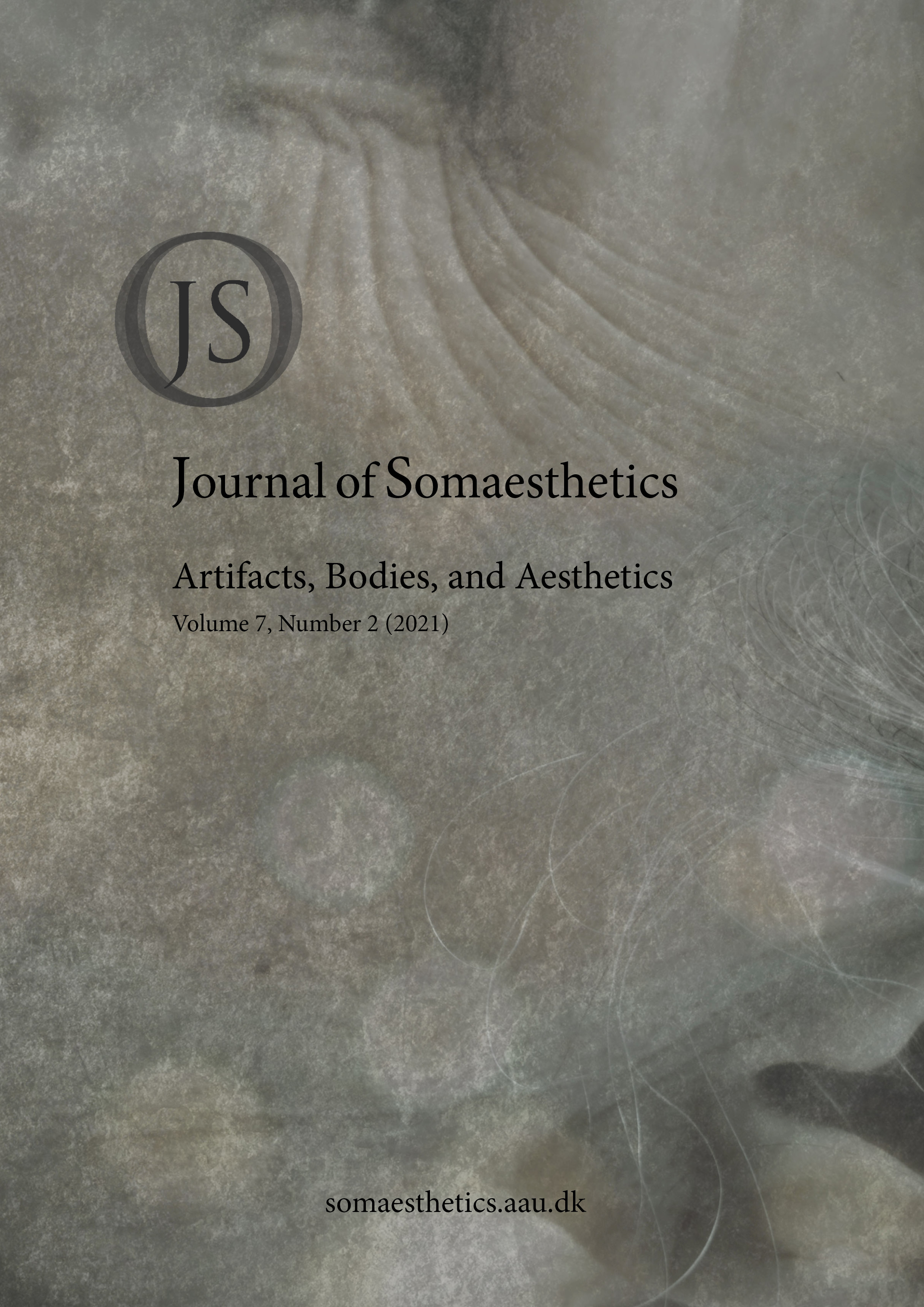Editorial: Artifacts, Bodies, and Aesthetics
Abstract
The relationship between the human body and cultural artifacts, such as design artifacts, artworks, and religious artifacts, is both fascinating and peculiar. For example, various art forms depict or use human and non-human bodies as a point of reference. However, philosophical aesthetics have neglected the material-energetic body of artifacts. Until recently, artifacts have been mainly viewed as “parenthetical” objects transcending strictly corporal matters because of the dominant aspects of the Western culture. Artworks and religious objects are predominantly represented as intrinsic aesthetic values or spiritual ideas that negate their physical relationship with the human body. Similarly, in addition to serving a functional purpose, design artifacts are also aesthetic objects that transcend their sensory and practical relationship with the user by focusing on the conveyance of narratives and ideas according to mainstream aesthetics.
Downloads
Published
Issue
Section
License
Articles published in The Journal of Somaesthetics are following the license Creative Commons Attribution-NonCommercial-NoDerivs 4.0 Unported (CC BY-NC-ND 4.0). Authors retain copyright and grant the journal right of first publication with the work simultaneously licensed under a Creative Commons Attribution License: Attribution - NonCommercial - NoDerivs (by-nc-nd). Further information about Creative Commons
If excerpts, tables, figures, charts, artwork or photographs from other copyrighted works are included in an article, it is the author’s responsibility to obtain written permission from the copyright owners and credit the source’s in the article and citation list.


